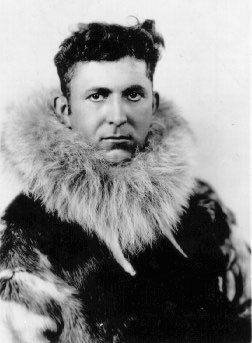Reaching the rocks.

On December 7 Gould led his team up the mountain’s steep southern slope. “We roped to climb and ‘herringboned’ and ‘sidebilled’ our way up on our skis,” he wrote in his journal for that day. “Had to climb even steeper slopes beyond these first crevasses to reach the coveted rocks — a bit hazardous this, for we were climbing along a steep side hill, and some 200 feet below us, paralleling our course, was a great yawning chasm. The snow was crusted over, and it was hard to make our skis stick, but we finally reached our rocks, the very rocks I wanted most to find in the Antarctic.” Gould hoped to confirm a suspicion that Mt. Nansen and the Queen Maud Mountains were part of a great uplifted fault system that stretched across the continent for more than 1,000 miles, and to find evidence that Antarctica was linked geologically to the Earth’s other great land masses. The rock formations on the peak — a series of sandstones with impure coaly material in the top seams — proved that Gould’s supposition was correct. “No symphony I have ever heard, no work of art before which I have stood in awe ever gave me quite the thrill that I had when I reached out after that strenuous climb and picked up a piece of rock to find it sandstone. It was just the rock I had come all the way to the Antarctic to find,” Gould wrote in a radiogram to Commander



